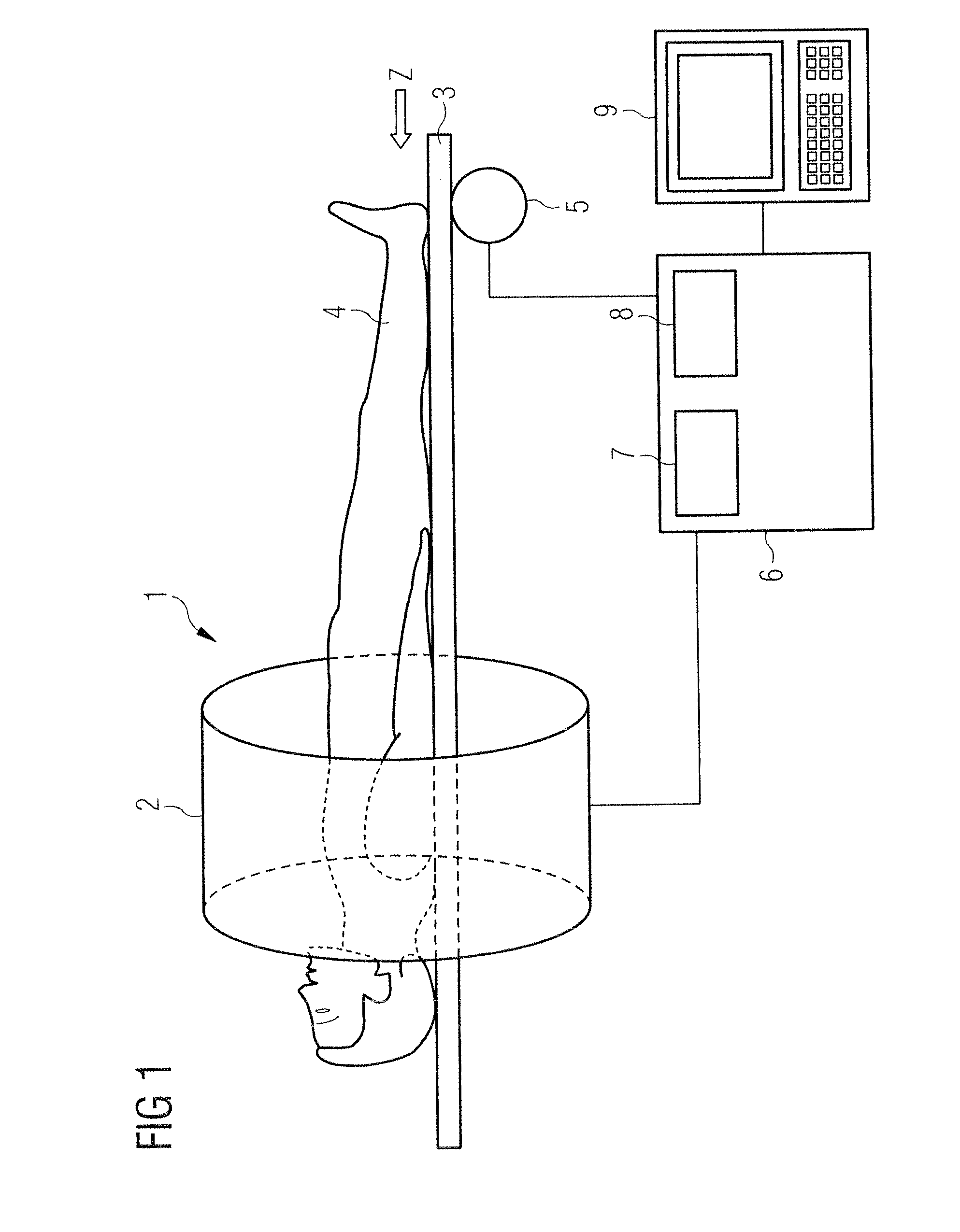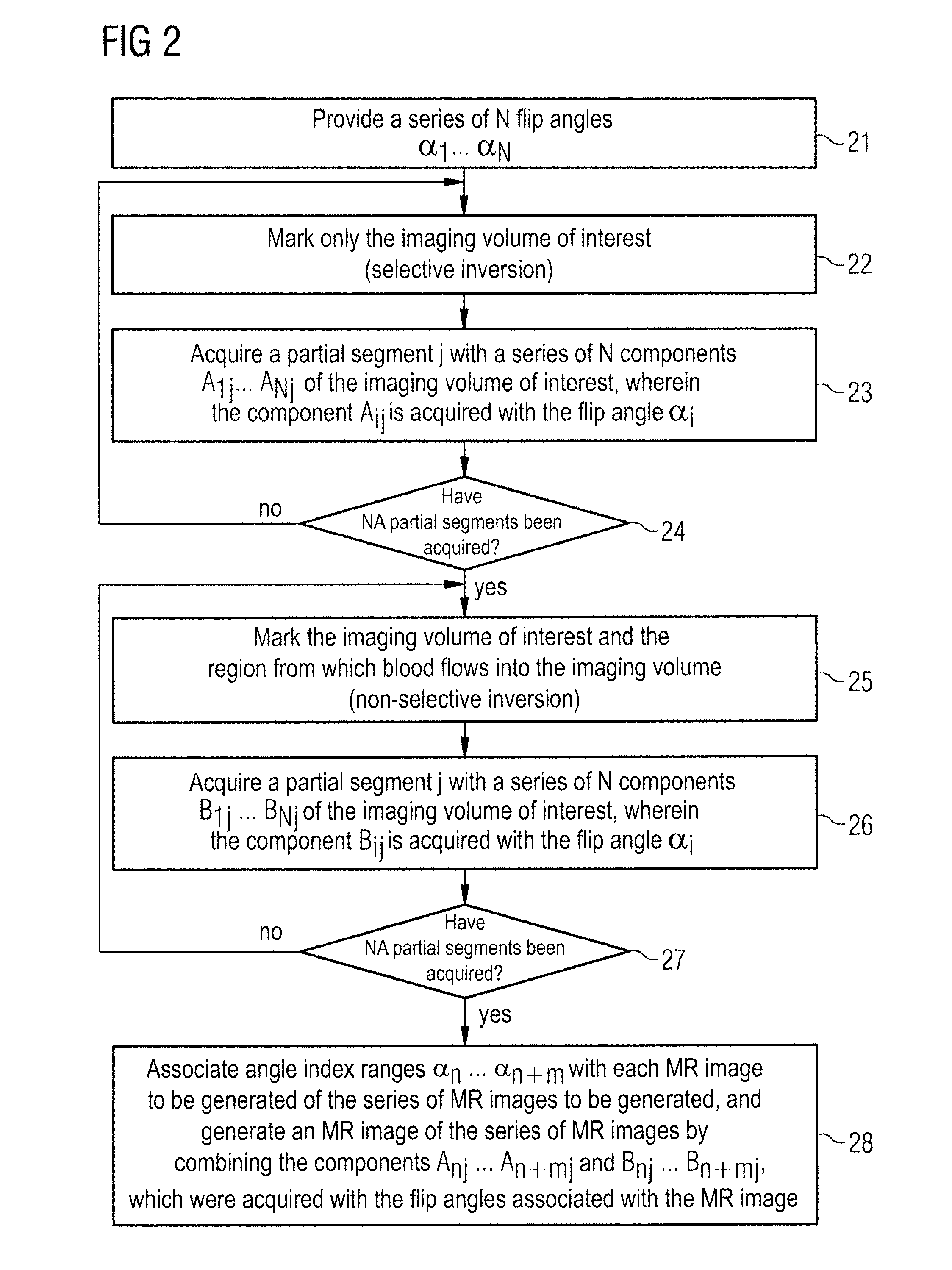Method and apparatus to generate angiographic magnetic resonance images
a technology of angiographic magnetic resonance and generating method, which is applied in the field of methods and apparatus to generate angiographic magnetic resonance images, can solve the problems of severe limitation of fisp imaging, loss of marking, and strong limitation of the volume within which the inflow process can be acquired
- Summary
- Abstract
- Description
- Claims
- Application Information
AI Technical Summary
Benefits of technology
Problems solved by technology
Method used
Image
Examples
Embodiment Construction
[0044]FIG. 1 shows a magnetic resonance system 1 with which a series of temporally successive angiographic magnetic resonance images can be generated according to the invention and which achieves an improved image quality across the entire series with a higher contrast vessel representation. The magnetic resonance system 1 has a magnet 2 to generate a polarization field B0. An examination subject 4 arranged on a bed 3 is driven with the aid of a drive 5 into the middle of the magnet 2, where an acquisition of the magnetic resonance signals from an examination region is conducted by radiating radio-frequency pulses and switching gradients. How magnetic resonance images can be generated in a pulse sequence via a series of radio-frequency pulses and switching of gradients is basically familiar to the man skilled in the art and is not described in detail here.
[0045]The magnetic resonance system 1 is connected with a central control unit 6 with which the magnetic resonance system 1 is co...
PUM
 Login to View More
Login to View More Abstract
Description
Claims
Application Information
 Login to View More
Login to View More - R&D
- Intellectual Property
- Life Sciences
- Materials
- Tech Scout
- Unparalleled Data Quality
- Higher Quality Content
- 60% Fewer Hallucinations
Browse by: Latest US Patents, China's latest patents, Technical Efficacy Thesaurus, Application Domain, Technology Topic, Popular Technical Reports.
© 2025 PatSnap. All rights reserved.Legal|Privacy policy|Modern Slavery Act Transparency Statement|Sitemap|About US| Contact US: help@patsnap.com



